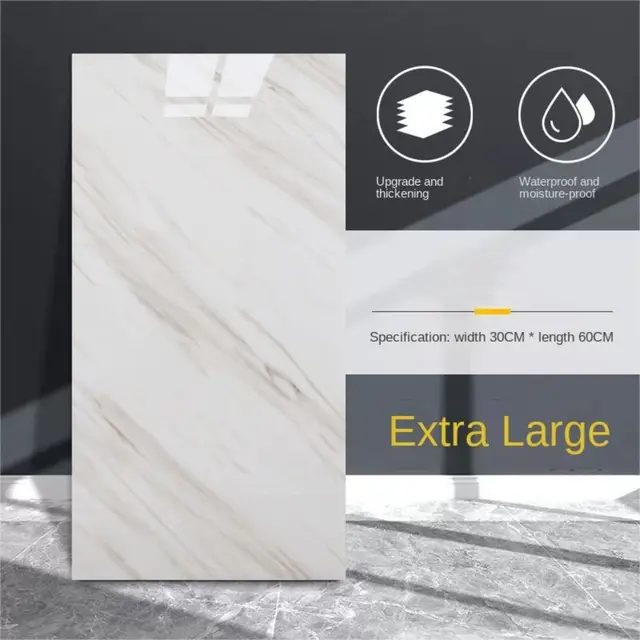Tiling a bathroom floor can seem daunting for beginners, but with the right approach, tools, and mindset, it can be an enjoyable and rewarding DIY project. This guide is designed to lead you through each step of the tiling process, from preparation to the final touches. By the end of this article, you will have a comprehensive understanding of how to tile a bathroom floor successfully.
Understanding Your Tools and Materials
Before you dive into the tiling process, it’s important to familiarize yourself with the essential tools and materials needed. Common tiles used in bathrooms include ceramic, porcelain, and natural stone. You’ll also need grout and adhesive specifically designed for wet areas. Standard tools include a tile cutter, trowel, notched trowel, measuring tape, chalk line, level, and bucket. Protective gear such as gloves and goggles are crucial for safety, especially when cutting tiles.
Consider the depth of your space when selecting your materials. If your bathroom is small and has low lighting, you might want to go for lighter-colored tiles to create an illusion of space. Conversely, darker tiles can provide a striking contrast in larger, well-lit bathrooms. Always read the manufacturer’s instructions on installation and weight limits, particularly for natural stone tiles which can be heavier. The right combination of tools and materials can set the stage for a smooth installation process.

Preparing the Bathroom Floor
Preparation is integral to a successful tiling project. Start by removing any existing flooring, and ensure that the subfloor is clean, dry, and level. Any imperfections could lead to uneven tiles or cracking in the future. If the subfloor is damaged or uneven, it may be necessary to repair or level it using a self-leveling compound.
Once the subfloor is appropriate for tiling, check for moisture. Bathrooms are prone to water exposure, and an adequately sealed subfloor can prevent future complications. Using a moisture barrier can provide an extra layer of protection. Additionally, make sure to measure your area accurately, as you’ll need these measurements to calculate how many tiles you will need. Acquiring extra tiles, typically 10% more than your calculated requirement, is advisable to account for mistakes or future repairs.
Planning Your Tile Layout
Next, it’s time to plan your tile layout. This essential step can significantly affect the overall visual appeal. Start by drawing a layout on paper, marking key features such as sinks, bathtubs, and toilets. To determine the best layout, try dry-laying the tiles in the bathroom without adhesive. This will help you visualize their arrangement and make adjustments as needed.
Begin laying your tiles from the center of the room or a focal point, moving outward. This method ensures a more symmetrical appearance, especially if your bathroom isn’t perfectly square or rectangular. Make use of a chalk line to mark straight lines, which will help in placing the tiles accurately. If you’re using larger tiles, a staggered pattern can add aesthetic appeal and minimize illusions of misalignment. Depending on the tile pattern you choose, consider how the design will lead the eye through the bathroom, emphasizing space and functionality.
Mixing and Applying Adhesive
With the layout planned, it’s time to mix and apply the adhesive. Follow the manufacturer’s guidelines regarding water-to-adhesive ratios. Mixing should be done in small batches to ensure that the adhesive remains workable for the duration of your project. A consistent, lump-free mixture is crucial for optimal tile adhesion.
Using a notched trowel, carefully spread the adhesive on a small area of the subfloor—work in sections to prevent it from drying out before tiles are laid. When applying the adhesive, hold the trowel at a 45-degree angle to create grooves, which will not only make it easier for the tile to adhere but will also allow for better drainage. The key here is to be thorough without over-applying the adhesive. Aim for a layer that is even and sufficient to keep the tiles firmly in place. Timing is critical; once the adhesive is laid, you need to act swiftly to place your tiles accurately.

Laying the Tiles
Now comes the most exciting part—laying the tiles. Starting at your chosen point, position the first tile into the adhesive, pressing down firmly. It’s essential to check for level as you lay each tile, adjusting as necessary. The use of tile spacers between each tile will help maintain consistent joints for grout, which should be around 1/16 to 1/8 inch based on the tile size and design you’ve chosen.
As you lay each tile, periodically check for level and straightness, using a level tool and measuring tape. If you encounter an obstacle like a bathroom fixture, make sure to cut your tiles accordingly using a tile cutter. Always wear protective eyewear during this process to guard against flying shards. Continue laying tiles until the entire floor is covered. If you find that you have a few odd spaces where smaller tiles are needed—often at the edges or around fixtures—cut these tiles carefully to fit. Always remember to take your time; rushing this step could lead to costly mistakes.
Cutting Tiles to Fit
Cutting tiles is an integral part of any tiling project. Whether you’re dealing with edges or awkward shapes around fixtures, it’s essential to get this step right to maintain the aesthetic appeal of your bathroom. A tile cutter is typically the best tool for straight cuts, while a wet saw is better for intricate cuts or larger tile formats. If you’re cutting through glass or intricate patterns, consider using a tile nipper.
Before you cut the tile, measure the required size and mark it on the tile with a pencil for accuracy. When using a tile cutter, align the tile according to the manufacturer’s instructions. For a wet saw, it’s advisable to wear protective gear, as the spray can create a slippery workspace. Always perform a dry fit by placing the cut tile in the intended position before applying adhesive. This ensures it fits snugly, ultimately providing a professional finish. Taking your time on this step will lead to a more polished overall look.

Grouting the Tiles
Once all tiles are laid and the adhesive has cured according to the manufacturer’s guidelines, it’s time to grout the tiles. Start by mixing the grout in a bucket, following the instructions for consistency and application. Grout is vital in filling the gaps between tiles, enhancing their waterproof properties and contributing to the overall look.
Use a rubber float to spread the grout over the tiles, pushing it into the joints thoroughly. Work diagonally to effectively fill the spaces and avoid pulling grout out when removing excess. After about 15 to 30 minutes, return to wipe off the excess grout using a damp sponge; this step is crucial as it keeps the grout lines clean and minimizes haze on the tile surface. Rinse the sponge frequently to prevent spreading excess grout onto the tiles. Once you finish, allow the grout to cure for at least 24 hours before using the bathroom space. Reseal the grout if required, using a ceramic tile sealer, to ensure long-term durability and water resistance.
Conclusion: Enjoy Your New Bathroom Floor
Congratulations! You’ve successfully tiled your bathroom floor. This project not only enhances your home’s aesthetic but also increases its value. By following this beginner’s guide, you’ve made an empowered choice to take on a DIY challenge, creating a space that is uniquely your own.
While the process may have seemed overwhelming at first, through preparation, patience, and precision, you’ve undoubtedly gained confidence in your DIY skills. Now, all that is left to do is to enjoy your new bathroom floor—a space that combines beauty with functionality, all thanks to your hard work. Remember, your local hardware store is filled with resources and experts who can help should you encounter any challenges in your future projects. Happy tiling!
